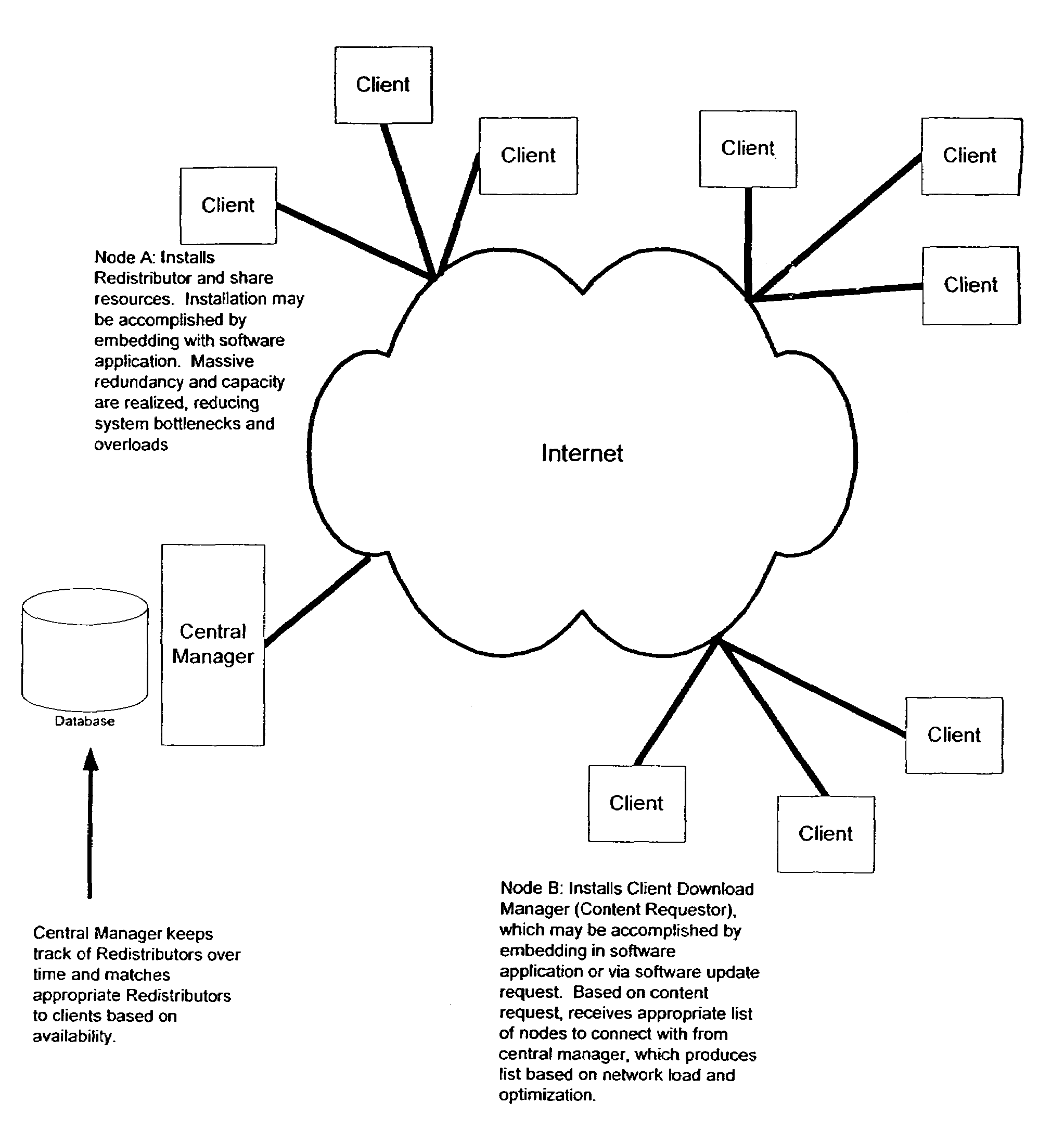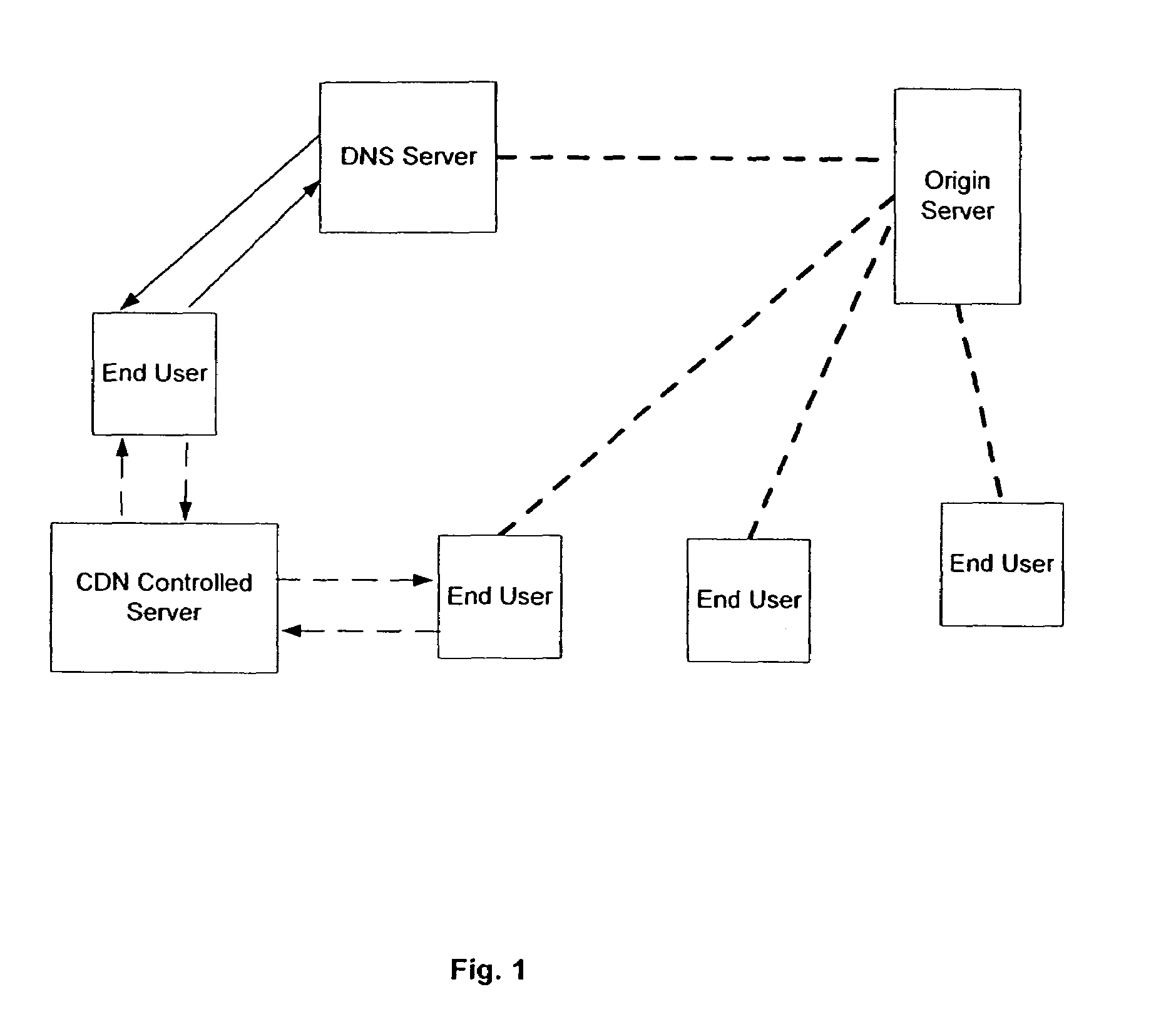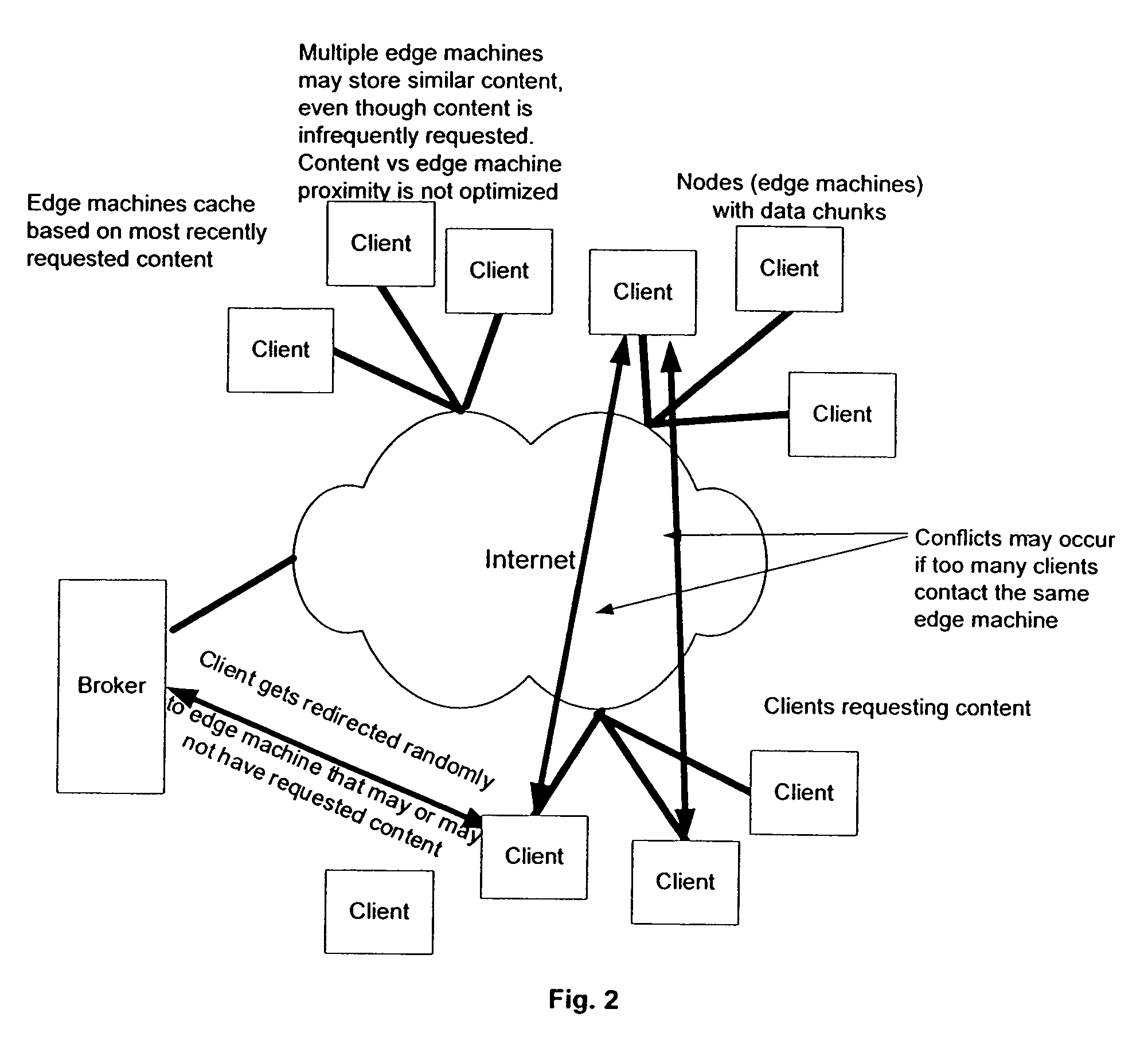[0036]The present invention overcomes the problems and deficiencies of the prior art by employing: a) a distributed, non-facilities based
content distribution network architecture, whereby client and server functions are separated, thus maximizing network reach; b) a distributed, non-facilities based
content management system, whereby end-users are not required to join the network or share computing resources; c) a separation of functional components in a software based CDN, whereby a class
system can be employed; and d) a software based
content distribution network that is device independent and utilizes a
thin client download manager.
[0037]The invention further provides a non-facilities based
content delivery network utilizing
distributed computing and
centralized management of edge
machine caches and that routes content Requesters to edge machines known to have the desired content. The
content delivery network in accordance with the invention also provides centrally managed edge
machine caching that also maintains an inventory of those caches. The non-facilities based
content delivery network also takes into account both demand and
file size when determining how often a file needs to be replicated, resulting in a non-uniform replication wherein files, with the same number of concurrent downloads, will have larger files replicated fewer times than smaller files. The non-facilities based
content delivery network utilizing
distributed computing also uses time separation to
route multiple content requesters to the same edge machines to prevent those Requesters colliding at edge machines. This allows one Requester to be downloading a portion of a file from one edge
machine while another Requester is downloading a different portion of the same file from a different edge machine and then the two Requesters switching to the other edge machine during a different time period.
[0038]The invention also provides a non-facilities based
content delivery network utilizing
distributed computing whereby edge machines alert a central manager by providing their status (i.e. when they become busy or idle) wherein the central manager uses that information to avoid routing content Requesters to busy edge machines. The invention further provides a virtual, distributed CDN whereby class systems are rules based and require end-users to meet those rules to obtain class status. The system may further comprise a centrally controlled
peer to peer (“P2P”) system that allows distribution of
digital content, with the ability to limit the number of bytes uploaded by participants in the P2P network wherein a
governor system monitors the number of bytes uploaded in a time period and prevents the uploading of additional bytes until a new time period begins. In addition, the system has the ability to select content distributors (for delivery of the content) based on different characteristics such as domain or
IP address and set the upload
limit value on the selected distributors based on the characteristics. The system may also have an improved
security system. The system may further comprise an efficient
encryption system to minimize computing resources and for sending data files from one to many. In some embodiments, the content
delivery system utilizing distributed computing has a central server to enhance security.
[0040]One embodiment of the content
delivery system in accordance with the invention may be used for a
wireless device. In this embodiment, the non-facilities based content delivery network with distributed computing utilizes an improved routing schema for the delivery of content. The system may also house data on edge servers local to
roaming mobile devices. The system may provide a localized routing scheme for
content management whereby the
public network is accessed by a gateway function at the local
wireless base station. The system may provide a software based
Content Delivery Network designed for mobile devices, whereby the client and server functions are separated. The system may also provide a more cost efficient routing schema which bypasses
roaming tariff structures and minimizes costs by routing content locally.
[0041]Thus, in accordance with the invention, a non-facilities based
content distribution network architecture utilizing distributed computing is provided whereby the client and the server functions are separated which maximizes network reach. The system provides a network wherein the end-users are not required to join the network or share computing resources. In a preferred embodiment, a software-based content delivery network is provided whereby a class system can be employed. The software based content distribution network is device independent and utilizes a client download manager in a distributed content delivery network utilizing
centralized management of edge machine caches. In accordance with the invention, content requestors are routed to edge machines known to have the desired content. The system may provide centrally managed edge machine caching wherein the central manager also maintains an inventory of those caches so that the content in each cache is known to better
route the content. In accordance with the invention, the central manager may provide the non-uniform replication of files across the system. In particular, the demand of the file and
file size are factors that are used to determine how often a file needs to be replicated. This results in a non-uniform replication wherein files, despite having the same number of concurrent downloads, that are larger in size will be replicated fewer times than smaller files.
 Login to View More
Login to View More  Login to View More
Login to View More 


